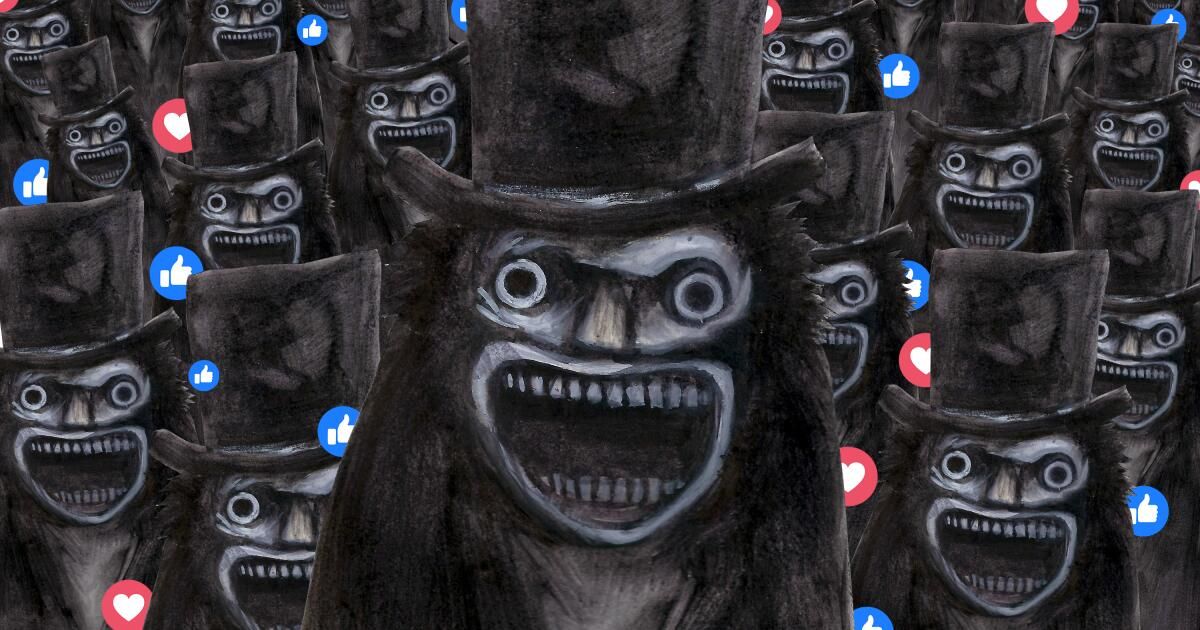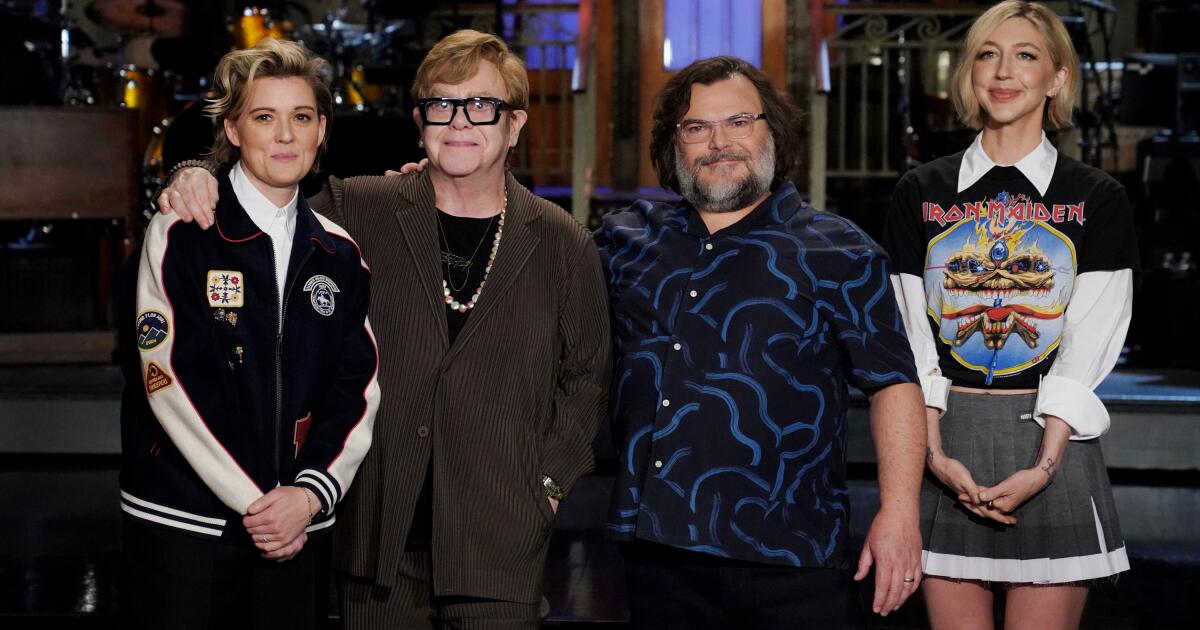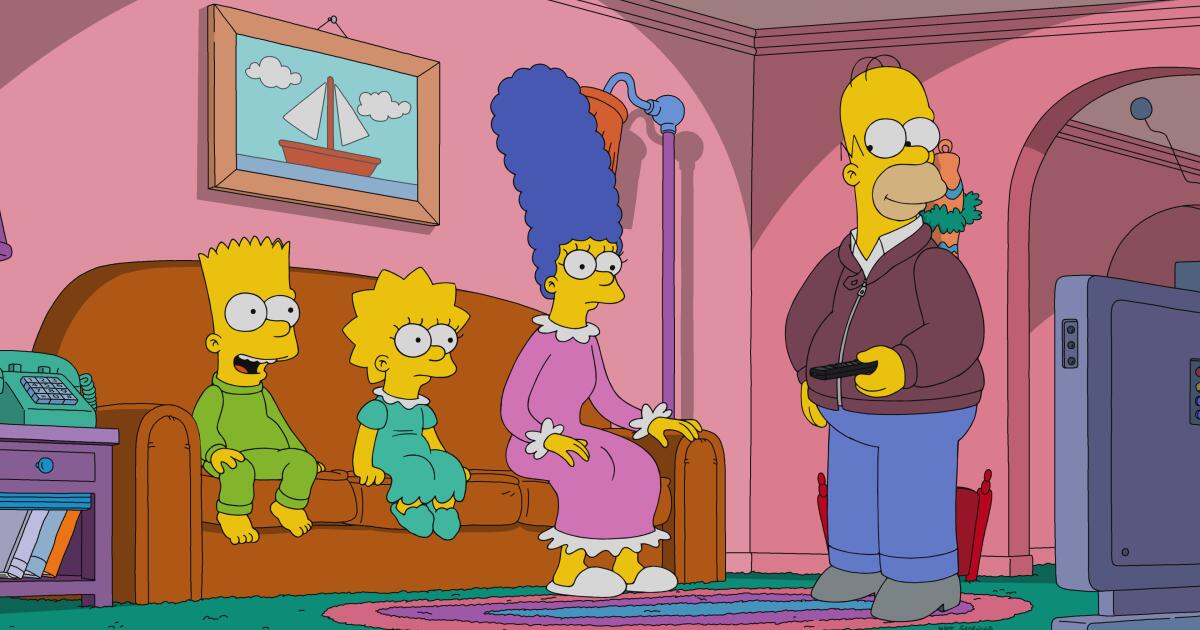When Jennifer Kent was developing a horror film centered on grief, she encountered people who didn't see a future in it. Many objected to the proposed title for her project, which was also the name of the sinister monster she had created as a metaphor for unresolved trauma.
“You can’t call a movie ‘The Babadook,’” he recalls being told. “It’s crazy. No one will ever remember it.”
In an interview with The Times via Zoom from her native Australia, Kent, 55, is no longer intimidated by those early naysayers. They have been proven wrong. Her finished 2014 film, which features a fierce central role by Essie Davis as a single mother struggling to keep a tight hold on her life in the years after the tragic loss of her husband, is back for a limited theatrical run starting Thursday.
The re-release will mark a decade since Kent's mother-son horror classic first terrorized Sundance to rave reviews (from the likes of Stephen King and William Friedkin), won a coveted New York Film Critics Circle Award and grossed over $10 million at the worldwide box office on a $2 million budget.
Appreciation for “The Babadook” has only grown, not despite its “crazy” name, but perhaps because of it.
“People were like, ‘What a stupid name,’” Kent said. “And it is. It’s a meaningless name, but there’s something about it that people remember.”
Kent immediately lights up, as if he's talking about an old friend.
Essie Davis and Noah Wiseman in the film “The Babadook”.
(Matt Nettheim / IFC Films)
In “The Babadook,” viewers get their first glimpse of who (or what) the titular figure is in the pages of a bedtime book. Born the same day his father died in an accident, Sam (Noah Wiseman) is a troubled six-year-old who, by his very existence, irritates his chronically sleep-deprived mother, Amelia (Davis). Every night, she asks him to read to her. On one particular night, days before Sam’s birthday (a date that looms large in the lives of this lonely duo), Amelia reads a book she’s never seen on the bookshelf before.
“If it’s in a word or a look,” the opening lines say, “you can’t get rid of the Babadook.” (The nursery rhyme has a decidedly sinister air.) It’s accompanied by hand-drawn charcoal illustrations depicting a creature with an old-fashioned top hat, a pair of bulging eyes, a matching mischievous grin, and a long, voluminous coat that hides spindly hands.
“I had just lost my father,” Kent recalls of the months in 2010 when he first developed “The Babadook.” “So I was dealing firsthand with grief and the pain that came with that, seeing it as a natural process. And I started thinking, ‘What if someone I couldn't 'Going through this?' That came a lot from some people's reaction to my loss. Some people just couldn't understand it or were scared of it.”
The look of the film (and, in turn, the Babadook) emerged from Kent’s work with illustrator Alex Juhasz, whose spare minimalism fed into the artisanal sensibility that Kent, originally an actress, envisioned for her feature debut. Just as she had done with “Monster,” the 2005 short that served as a clear predecessor to “Babadook,” Kent wanted to return to the similarly playful, nightmarish world of early silent cinema.
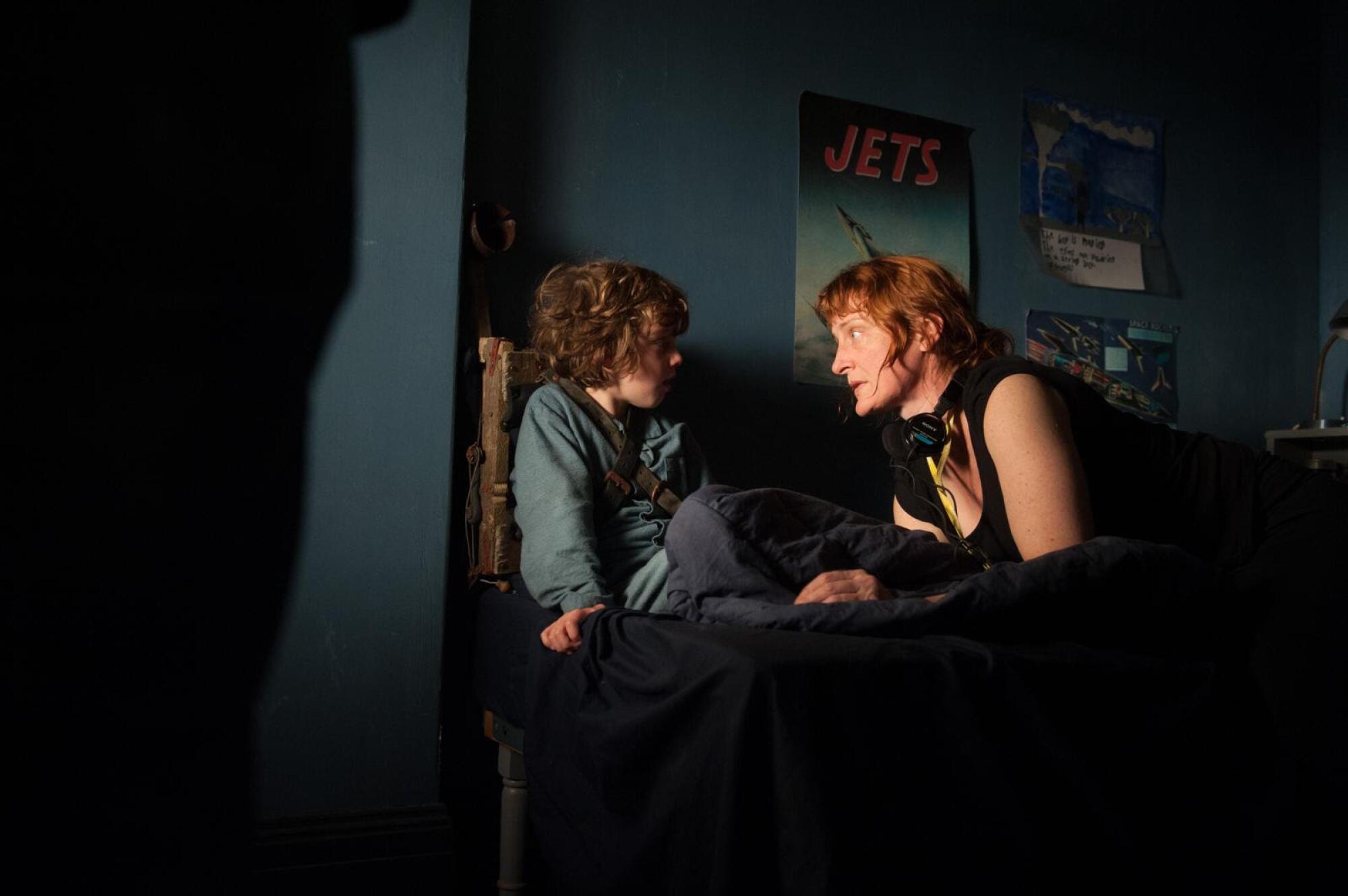
Director Jennifer Kent on the set of “The Babadook” with actor Noah Wiseman.
(Matt Nettheim / IFC Films)
“I wanted it to look like something that was playing at being human,” he says of the creature. “And when I saw the images of Lon Chaney in [the lost 1927 silent film] “London After Midnight” had a macabre quality to it, but it was also a little cheesy, and I thought that was perfect.”
That simplicity in design, along with a certain sense of artifice, is partly what helped turn Kent's boogeyman into a unlikely gay iconNo sooner had “The Babadook” become a horror classic in its own right, when it became a ready-made meme machine that, in the summer of 2017, found traction within the LGBTQ+ community.
As one Tumblr user put it in a post Since October 2016“Whenever someone says the Babadook isn’t overtly gay, people are like, ‘Have you seen the movie? ’” Michael J. Faris, a scholar who has written about the queer circulation of “Babadook,” points to that very publication as the likely origin of Kent’s film’s acceptance within the LGBTQ+ community.
The blatant irony of those viral posts was instrumental in Kent’s horror film circulating in extremely online circles in the years that followed. To deny the Babadook’s queer credentials was to deny its very existence. It was guilt covered up. It was menace in a top hat. It was a suburban family under siege.
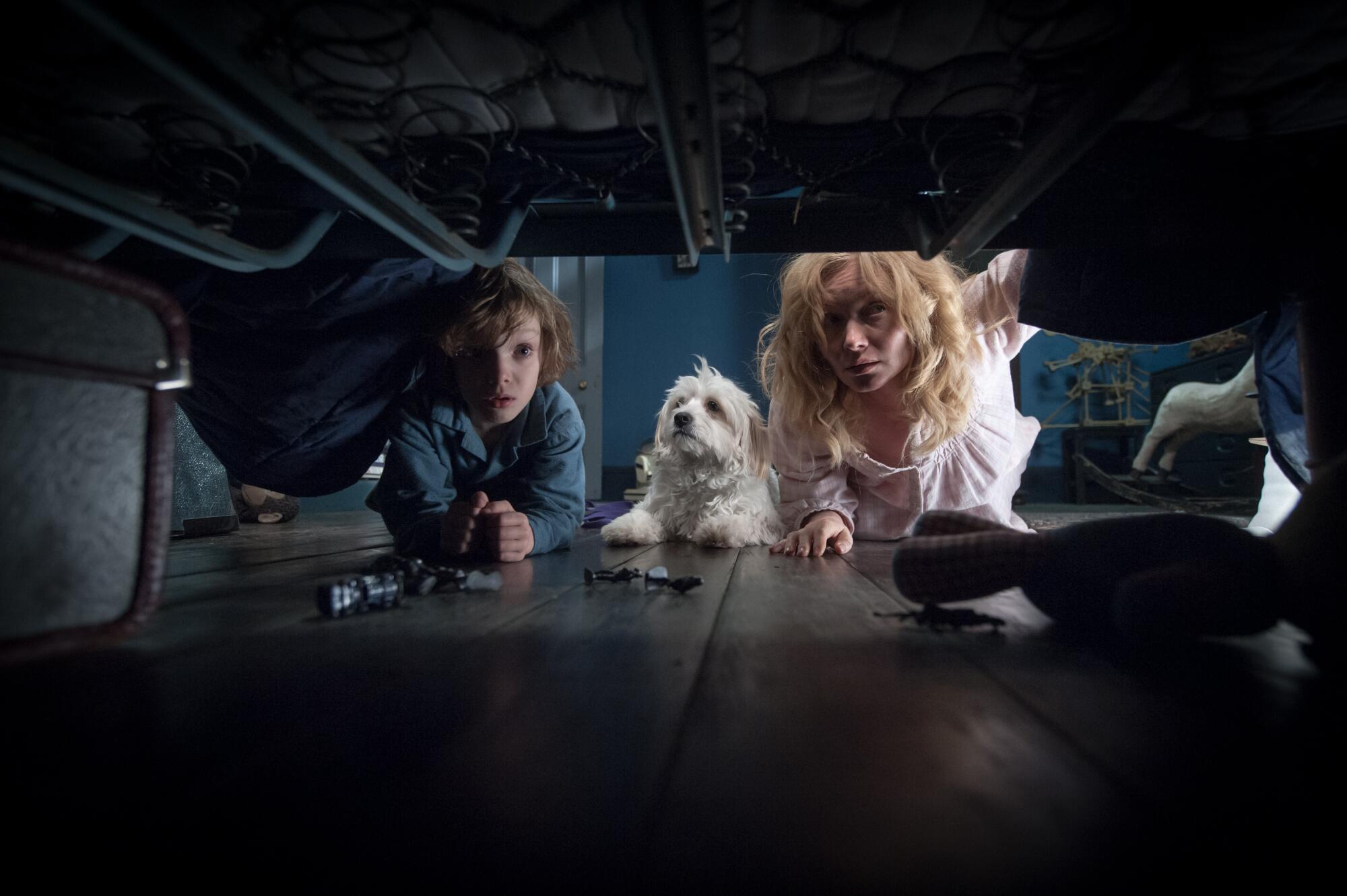
Noah Wiseman and Essie Davis in the film “The Babadook”.
(Matt Nettheim / IFC Films)
“My initial reaction was confusion,” Kent admits, laughing, as he reflects on his film’s unexpected queer legacy. “Then, when it persisted, I thought, ‘Well, there must be something to this, you know? And it’s delicious to me. ’”
Fans were soon drawing Kent's cutesy monster against… rainbow backgroundsThey were modifying their rhyme schemes to echo contemporary gay slang (“BABAYAAAAAAAAASS!”) An illustration read). They were retouching his face with Photoshop. old photos of 1970s muscle men in short shorts. In the season 9 finale of “RuPaul's Drag Race,” taped in the summer of 2017, social media star Miles Jai appeared in Drag Babadook complete.
“If it was a meaningless meme or a tweet from someone or whatever, it would have just come and gone,” Kent says. “It would have been funny for a week, but there’s something that sticks around.”
Since then, Kent has watched her character enjoy a life unlike any she could have imagined for him.
“I wrote this in complete honesty for myself, from a very real place,” she says. “And yes, it is about pain. But it’s also more about repression, really. And what the audience is saying is, ‘You can’t get rid of me, guys! I’m here! I’m going to get bigger and fatter and more enormous and more menacing if you try to suppress me! ’”
In the film, he may be all menacing shadows and insect-like vocal trills, but in the wild, the Babadook has become synonymous with an unabashed queer figure who suffers no fools: an antisocial narcissist who lives in basements and terrorizes small children for fun. Scene inspired by “Queer Eye” According to the animated parody series “Robot Chicken,” he is “a closeted recluse with a penchant for steampunk accessories.”
In retrospect, however, Kent thinks that irreverence was already present in the way she first promoted the film.
“During the publicity and promotion of the film, it was all very simple,” he recalls. “So I was the Babadook of Facebook. I would log on every day and tell people things. And they loved it. I think he’s a really fun character in that way. It was wonderful to play him and be him.”
Kent never imagined “The Babadook” would have such lasting appeal. She can’t help but compare that embrace to the way her next film, 2018’s “The Nightingale,” struggled to find an audience.
“With The Nightingale, because it came out at a time when there was a lot of talk about violence — and certainly violence against women — I thought it would be well-received, but it wasn’t,” Kent says wistfully. “It was a very misunderstood, very divisive film. And I didn’t see that coming.”
Meanwhile, “The Babadook” has had an enviable trajectory, from eye-catching villain to social media sensation and, later, cultural icon. Kent’s film was already a meme before that term was even commonly used. In time, the Australian filmmaker knows there will be plenty more to be surprised about as the film finds younger, new fans.
“He loves the attention, I can tell you that,” Kent says, smiling about his clever creation. “He's enjoying it.”

